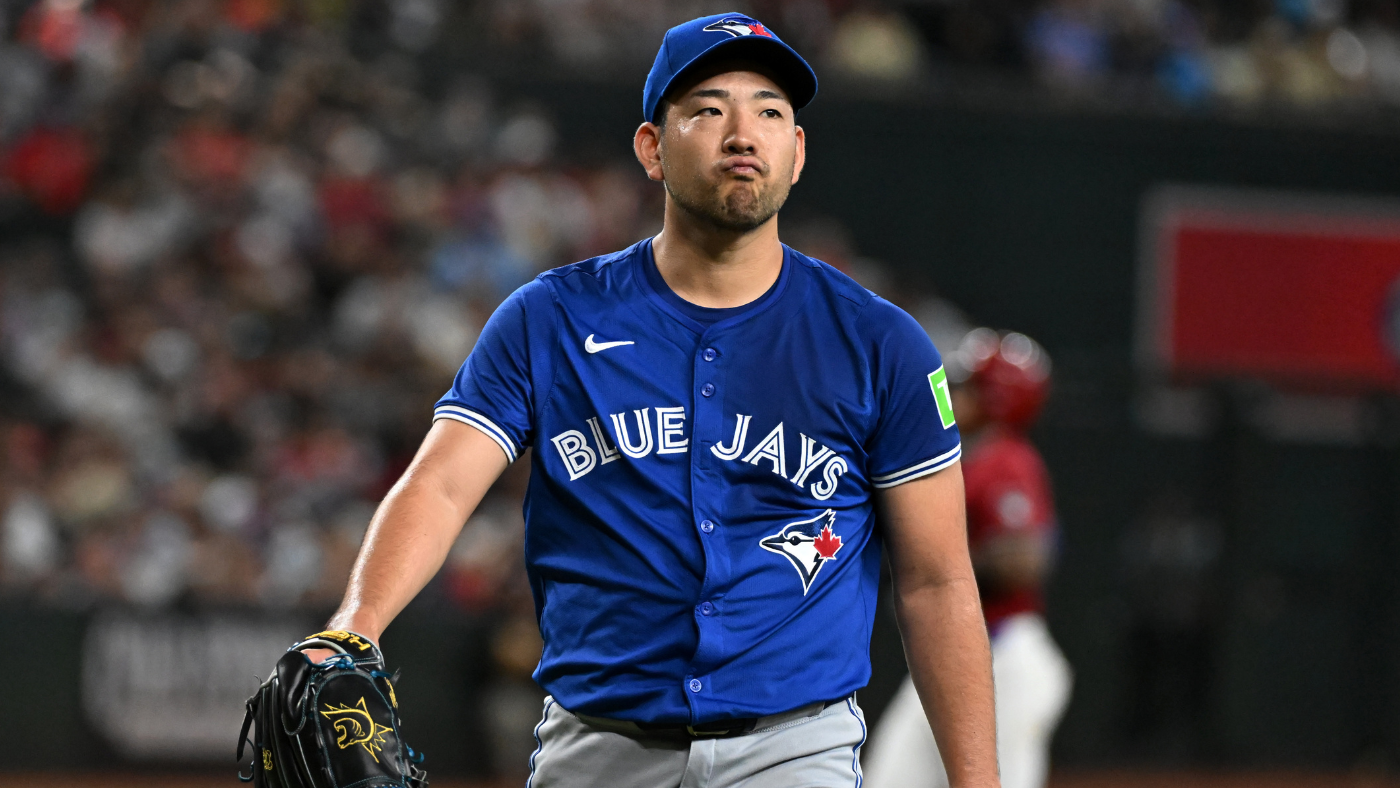Yusei Kikuchi trade grades: Why Astros’ steep price could be worth it for Blue Jays lefty
Written by CBS SPORTS ALL RIGHTS RESERVED on July 30, 2024

The Houston Astros raised eyebrows on Monday night when, just under 24 hours from Major League Baseball’s trade deadline, they acquired left-handed starter Yusei Kikuchi from the Toronto Blue Jays in exchange for three prospects: right-hander Jake Bloss, outfielder/first baseman Joey Loperfido, and infielder Will Wagner.
The public reaction, understandably, held that this was an overpay on Houston’s part. The Astros were parting with the players who Baseball America ranked as their Nos. 2, 5, and 19 prospects in exchange for Kikuchi, a pitcher with an 85 ERA+ over his first 22 starts this season. It’s not as though Kikuchi has a history of dominance. Just twice in his first five big-league seasons has he finished with an ERA+ over 93 (traditionally where the average starting pitcher falls) and only once has he topped 100, with that coming last season.
Inside the industry, the reaction was different. Conversations with multiple rival evaluations have painted a picture of a deal that’s more fair than not. In fact, if we graded this trade like we do for the most notable deals, we’d hand both parties a B grade for their work here — no great disparity like you might suspect. We’ll explain more below as we work through three reasons why the Astros were fine making the deal they made.
Kikuchi has untapped upside
We know. Touting a 33-year-old’s potential feels a wee bit ridiculous. It doesn’t help that the possibility of Kikuchi has seldom informed the reality of Kikuchi. Nevertheless, what we heard from other teams is that they too liked him, in part because of how their internal, proprietary pitch-quality models graded his offerings.
The public attempts to match those models also like Kikuchi’s arsenal — particularly his fastball and slider. (His changeup also grades well, but his usability of it seems more limited.) FanGraphs’ Stuff+ metric gives him three above-average offerings; Baseball Prospectus’ StuffPro says the same; ditto for Robert Orr’s pitch quality metric. And so on. It’s not every day that you can obtain a southpaw with that kind of stuff, let alone with the command to walk two batters per nine, let alone with the stamina to routinely work five-plus. You get the point: he possesses the kind of strong innate traits that tend to correlate with significantly better numbers than he’s put forth.
It’s perfectly valid to ask why Kikuchi hasn’t been able to convert his apparent talent into results. So much of player evaluation and acquisition these days is about what a player could be, not what they have been. That’s undeniably the case here.
The Astros surely have their hunches — presumably as it pertains to pitch usage, location, or some combination thereof. One possible tweak to our eyes concerns Kikuchi’s curveball. It’s been his worst-performing pitch this season, surrendering arsenal-worst marks of a .291 average and a 91.1-mph exit velocity, yet he’s used it as his main secondary offering. Surely Kikuchi would benefit from reducing his curveball usage in favor of throwing more sliders and changeups.
We’ll see if the Astros agree, and we’ll see if any other hunches they hold about Kikuchi’s game translate to better performance. Remember, this kind of work isn’t as easy as it may appear; if it was, Kikuchi wouldn’t be joining his third organization without having more MLB success to his name.
Prospect rankings are relative
Here’s a truth that may seem self-evident but that gets lost in the shuffle when it comes to instant analysis: being a top prospect in some systems means more than being a top prospect in other systems. That’s a nice way of saying: the Astros have a weak farm system. It’s not general manager Dana Brown’s fault; it’s what happens when a team has spent a decade making win-now moves and choosing late (or not at all) in the first round. Pennants, not farm system rankings, are what have and continue to matter to the Astros.
Each of the prospects they gave up on Monday are interesting in their own right, but are also far removed from fitting the conventional “top prospect” profile. Bloss, for the evaluators we spoke to, profiles as more of a back-end starter. Loperfido has struggled to make reliable contact in the majors — a worrisome development given he’s 25 and offers limited defensive value. Wagner (son of former MLB All-Star Billy Wagner) has hit .307 with more walks than strikeouts in Triple-A, yet a complete lack of in-game power raises questions about his ceiling.
Don’t take our evaluations as gospel. We’ll note that FanGraphs’ Eric Longenhagen had the Astros as one of the worst farm systems in baseball — and that was before Monday’s trade. Indeed, Longenhagen had the Astros with just two players who projected as league-average contributors or better: Bloss and outfielder Jacob Melton. Loperfido checked in as a fringe player, while Wagner was considered closer to organizational depth.
This is where we’ll explain why we gave the Blue Jays a B: we’re not head-over-heels with their return here, but we do think they arguably did a better job than the White Sox did with their Erick Fedde return — and that’s with Fedde being less costly and having an additional year of control. We’ll see what other rental starters bring back ahead of Tuesday’s deadline, but trades have to be judged within the context of the deals that came before them.
The state of Houston’s farm system limited Brown’s options. He was never going to land Tarik Skubal or Garrett Crochet or anyone else at the top of the market. What he chose to do, then, was secure a lefty starter who could — with good instruction and some luck — pitch like the players that were beyond Houston’s grasp. We can’t write this for sure, but it’s possible this was the best deal Brown could make given his resources. And there’s a great reason why he may have felt compelled to do something.
Houston’s window is probably closing
Let’s not overlook another factor that undoubtedly played into Monday’s deal — and that should make it more digestible: the Astros can hear the clock ticking.
As we observed last fall, the Astros appear to be nearing the end of their incredible, albeit controversial decade-long run. Several key members of their core are either nearing the end of their careers (Justin Verlander), or nearing free agency (Alex Bregman, Kyle Tucker, Framber Valdez). At present, it’s unclear if the Astros will spend to keep those players in town, or if they’ll be able to secure satisfactory replacements. (Clearly help won’t be coming in the form of prospects, at least not based on how the farm system looks now.)
The future is unknown for every team, of course, but the uncertainty facing the Astros next few seasons feels more severe than for the average club. We don’t think Houston overpaid for Kikuchi the way it may have first appeared. If you do, though, you can at least understand why they were willing to do it: flags may fly forever, but the window to secure them doesn’t stay open nearly as long.
Even if the Astros come up short in their pursuit of yet another American League pennant, we doubt they’re going to wind up regretting this deal.
The post Yusei Kikuchi trade grades: Why Astros’ steep price could be worth it for Blue Jays lefty first appeared on OKC Sports Radio.





